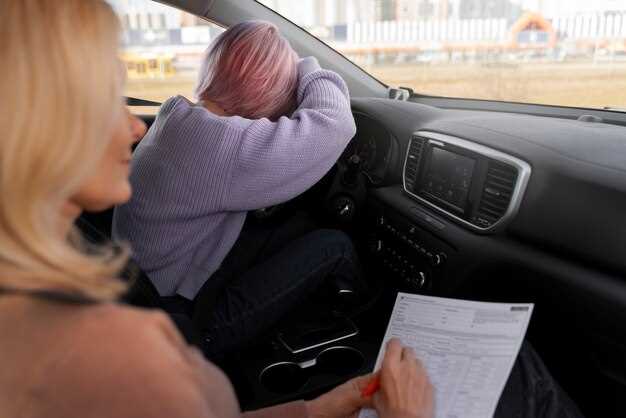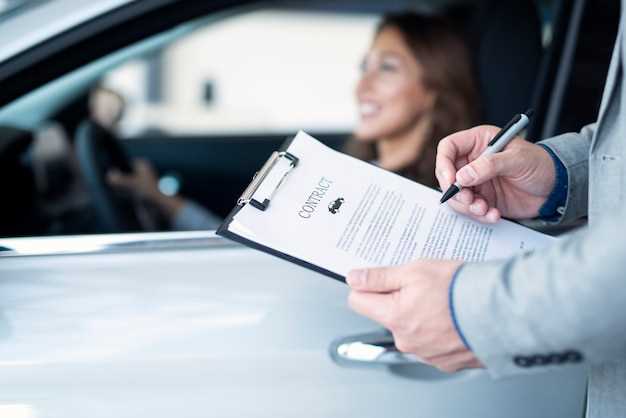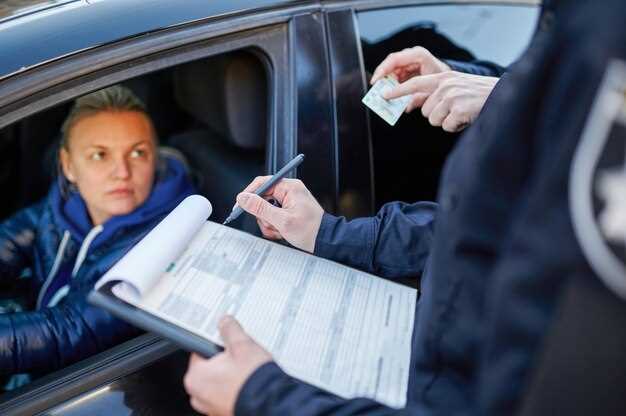Paperwork needed when buying a car

When considering the purchase of a car, one of the most crucial aspects is ensuring that you have all the necessary documents in place. The car buying process involves not only selecting the right vehicle but also navigating through various legal requirements that are vital for a smooth transaction. This guide provides an overview of the essential paperwork needed to finalize your car purchase successfully.
Before completing your car purchase, it is imperative to understand the importance of registration and ownership transfer documents. These documents serve as proof of ownership and are required to legally operate the vehicle. In many regions, failing to obtain the necessary registrations can lead to complications, including potential fines and legal disputes.
By familiarizing yourself with the required paperwork ahead of time, you can streamline the car buying experience. This guide outlines the primary documents needed, helping you save time and avoid unnecessary setbacks when you decide to make your purchase.
Essential Documents Needed for Vehicle Purchase
When purchasing a vehicle, it is crucial to gather and prepare specific documents to ensure a smooth transaction. The first essential document is your valid driver’s license. This serves as proof of identity and demonstrates that you are legally permitted to operate a vehicle.
Another important document is the proof of insurance. Most states require a valid insurance policy before a vehicle can be registered. Therefore, it is recommended to have this documentation ready at the time of purchase.
A purchase agreement or bill of sale is also necessary. This document outlines the details of the transaction, including the purchase price, vehicle identification number (VIN), and both the buyer’s and seller’s information. This acts as legal evidence of the sale.
In addition, having the vehicle title is critical, especially if you are buying a used car. The title proves ownership and should be transferred to you at the time of sale. If there is an outstanding loan on the vehicle, ensure that the seller has settled it and can provide a lien release letter.
Lastly, prepare to provide your proof of residence, such as a utility bill or lease agreement. This document may be needed for vehicle registration, confirming your current address to the authorities.
By ensuring you have these essential documents, you can facilitate a hassle-free vehicle purchase process and successfully register your new acquisition.
Steps for Vehicle Registration After Purchase

After purchasing a vehicle, the next crucial step is to register it properly. This process ensures that you are legally recognized as the owner and allows you to obtain the necessary documents for driving. Here are the essential steps to follow for vehicle registration:
1. Gather Required Documents: Collect all necessary documents that are usually required for registration. This includes the vehicle title, a bill of sale, identification proof, and proof of residency. Some states may also require a completed application form for vehicle registration.
2. Check Emission and Safety Standards: Before registration, ensure that your vehicle meets local emission and safety standards. This may involve undergoing inspections, which must be completed before you can officially register your vehicle.
3. Visit the Relevant Authority: Go to the Department of Motor Vehicles (DMV) or an equivalent local authority responsible for vehicle registration in your area. Verify if you need to make an appointment or if walk-ins are accepted.
4. Submit Your Documents: At the DMV, present your gathered documents to the clerk. They will verify the authenticity and completeness of the information provided to ensure that everything is in order for registration.
5. Pay Required Fees: Be prepared to pay registration fees, which can vary by state and vehicle type. The clerk will inform you of the total amount due, which typically includes taxes, title fees, and license plate fees.
6. Receive Registration and License Plates: Once your application is processed and fees are paid, you will receive your vehicle registration document and, if applicable, license plates. Make sure to keep these documents in a safe place.
7. Obtain Insurance: Finally, ensure that you have appropriate insurance coverage for your vehicle. Some regions may require proof of insurance prior to issuing the registration.
Following these steps will help you complete the vehicle registration process efficiently and legally, ensuring that you can enjoy your new purchase with confidence.
Understanding Financing Documentation for Car Loans

When purchasing a vehicle, understanding the financing documentation is crucial for a smooth transaction. Car loans require specific paperwork that outlines the terms and conditions of the financing arrangement. These documents are essential for both the lender and the borrower, ensuring clarity and transparency throughout the loan process.
Loan Application: The first piece of documentation you will encounter is the loan application. This form collects personal information, employment details, and financial history. Accurate information is vital, as it will influence your loan approval and interest rates.
Credit Report: Lenders typically check your credit report to assess your creditworthiness. A good credit score can lead to better financing terms, including lower interest rates. It’s beneficial to review your credit report beforehand to resolve any discrepancies that may impact the loan approval.
Loan Estimate: Upon loan application approval, you will receive a loan estimate. This document outlines the loan amount, interest rate, monthly payments, and total loan cost, including financing fees. Make sure to review this carefully and ask questions if any terms seem unclear.
Purchase Agreement: After selecting your vehicle, you’ll encounter the purchase agreement. This document details the sale terms, including vehicle price, trade-in value (if applicable), and any warranties or add-ons related to the vehicle. Ensure that all figures align with your expectations and the loan estimate.
Registration Documentation: Once financing is secured, you’ll need the necessary registration documentation. This includes proof of insurance and the vehicle identification number (VIN). Lenders typically require that the vehicle be registered in the borrower’s name to protect their investment.
Understanding these documents is essential for navigating the car loan process. By familiarizing yourself with each piece of paperwork, you can ensure that you are making informed decisions concerning your vehicle purchase.

